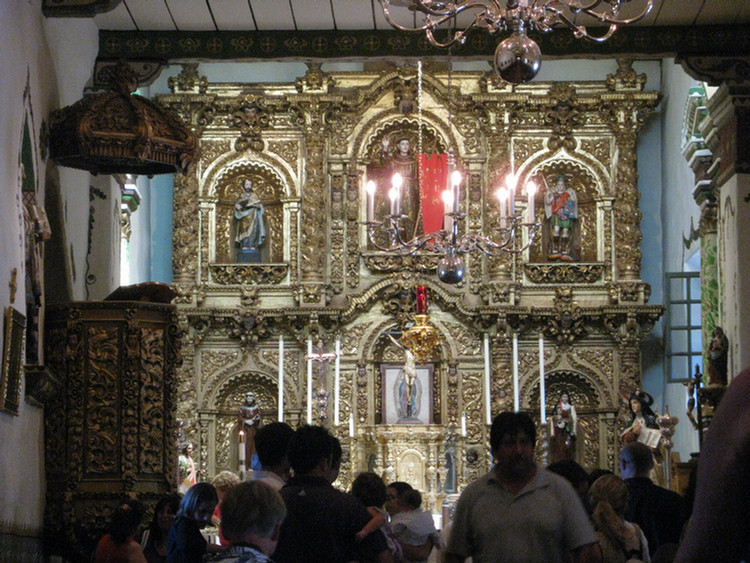We Arrived At 10:15 am (Page Two)

Located on Ortega Highway
Did you know? - Father Juan Crespí, as a member of the Portolà Expedition of 1769, authored the first written account of actual interaction between Franciscan friars and the indigenous population in the region that today makes up Orange County, after the group passed through on July 22 of that year. The travelers officially named the area after Santa Maria Magdalena (though it would also come to be called the Arroyo de la Quema and Cañada del Incendio, "Wildfire Hollow"). In early 1775, Don Antonio María de Bucareli y Ursúa, Viceroy of New Spain, authorized the establishment of two additional mission sites, one of these to be placed at a logical halfway point between Mission San Diego de Alcalá and Mission San Gabriel Arcángel. The viceroy had already selected the patron saint for the new settlement, "San Juan Capistrano.
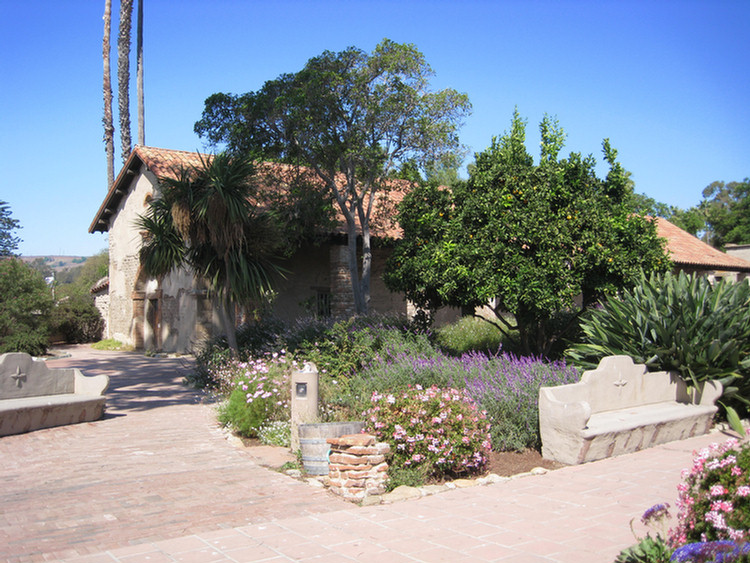
The Plaza was filled with native plants

The buildings have been well preserved. This is the Church (A)
Did you know? -At the proposed site, located approximately 26 leguas (Spanish Leagues) north of San Diego, 18 leagues south of San Gabriel, and half a league from the Pacific Ocean, an enramada (arbor) was constructed, two bronze bells were hung from the branch of a nearby tree, and a wooden cross was erected. The grounds were consecrated by Father Fermín Lasuén of Mission San Carlos Borromeo de Carmelo on October 30, 1775 (the last day of the octave after the feast of San Juan Capistrano), near an Indian settlement named Sajavit; thus, La Misión de San Juan Capistrano de Sajavit was founded.

The olive mill is right outside the Guard House (U & V)
Did you know? - The olive tree is an evergreen tree or shrub native to the Mediterranean, Asia and parts of Africa. It is short and squat, and rarely exceeds 8–15 meters in height. The silvery green leaves are oblong in shape, measuring 4–10 cm long and 1–3 cm wide. The trunk is typically gnarled and twisted. The small white flowers, with ten-cleft calyx and corolla, two stamens and bifid stigma, are borne generally on the last year's wood, in racemes springing from the axils of the leaves.
The fruit is a small drupe 1–2.5 cm long, thinner-fleshed and smaller in wild plants than in orchard cultivars. Olives are harvested at the green stage or left to ripen to a rich purple colour (black olive). Canned black olives may contain chemicals that turn them black artificially.

The same olive mill circa 1898
The Northern Building Was Warehouses And Soldiers Barracks

They didnot look like this 300 years ago! (V - Major Domo)
Did you know? - A majordomo is a person who speaks, makes arrangements, or takes charge for another. Typically, the term refers to the highest (major) person of a household (domo) staff, one who acts on behalf of the (often absent) owner of a typically large residence. Similar terms include castellan, concierge, chamberlain, seneschal, Mayor of the Palace, maître d'hôtel, butler and steward. The term also refers, more informally, to someone who oversees the day-to-day responsibilities of a business enterprise.
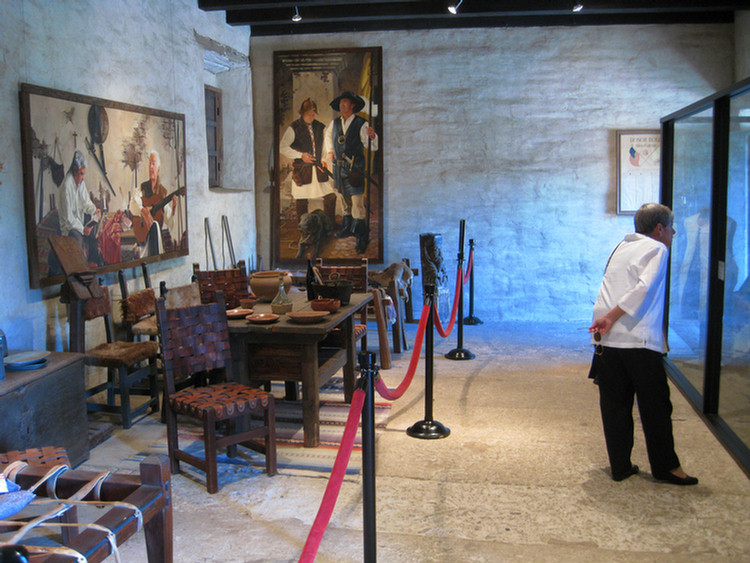
The furniture and beds were quite realistic
Did you know? - Barracks (from French "baraque," taken from the Catalan word "barraca") are living quarters for personnel on a military post. They are typically very plain and all of the buildings in the housing unit are often uniform structures.
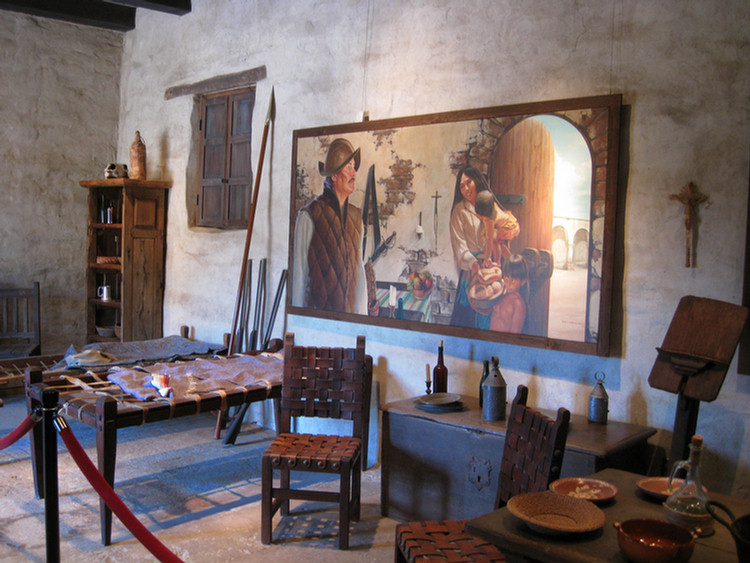
Look nice with lighting but candles were used originally
The Juaneño or Acagchemem Were The Original Inhabitants Of The Area

They lived by streams that existed 250 years ago
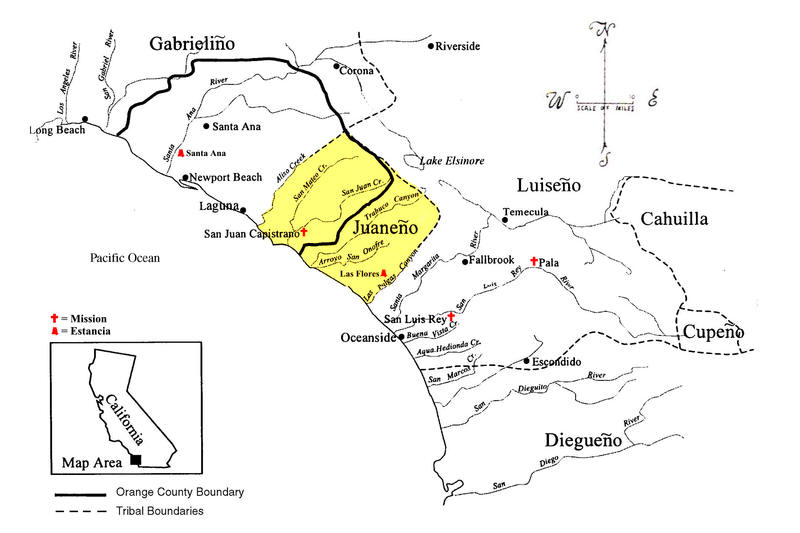
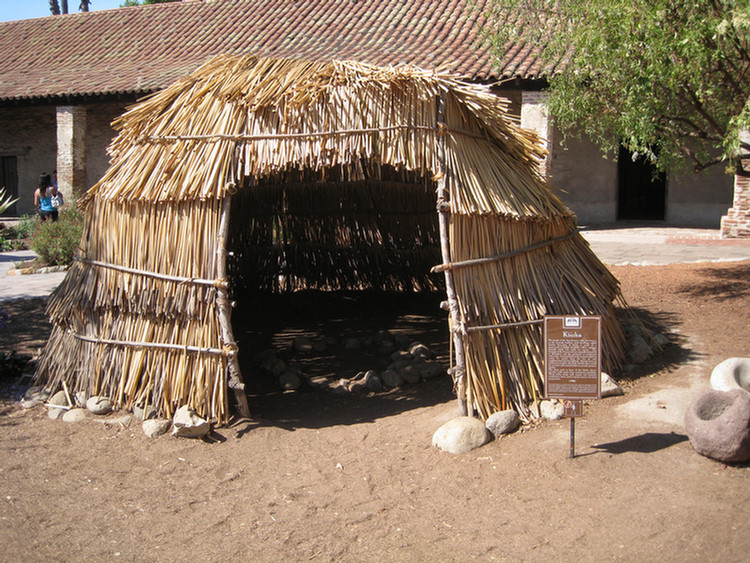
Native housing when the Spanish arrived
Did you know? - The pre-contact Acjachemen built cone-shaped huts made of willow branches covered with brush or mats made of tule leaves. Known as Kiichas (or wikiups), the temporary shelters were utilized for sleeping or as refuge in cases of inclement weather. When a dwelling reached the end of its practical life it was simply burned, and a replacement erected in its place in about a day's time.
Did you know? - The Juaneño or Acagchemem are a Native American group from Southern California. The Juaneño lived in what is now part of Orange and San Diego Counties and received their Spanish name from the priests of the California mission chain due to their proximity to Mission San Juan Capistrano. Today they call themselves the Juaneño Band of Mission Indians, Acjachemen Nation. The language was extinct but is being revived by several tribal members learning the language, thanks to the research and records of Anastacia Majel and John P. Harrington who recorded the language back in 1933 (the tape recordings resurfaced around 1995).
Now We Enter The Main Buildings

Built to last... They did!
Did you know? - Father Serra himself, along with Fathers Amúrrio and Pablo de Mugártegui, took up work on the Mission at San Juan Capistrano; the contingent, accompanied by eleven soldiers, arrived on October 30 or 31st, 1776. Upon their return to the site today known as "Mission Vieja," the party excavated the bells and constructed a new arbor; the original wooden cross was, to their surprise, still standing. Father Serra celebrated High Mass in thanksgiving on November 1, 1776 — celebrated ever since as the official founding date. Due to an inadequate water supply the Mission site was subsequently relocated approximately three miles to the west near the Indian village of Acágcheme. The new venue was strategically placed above two nearby streams, the Trabuco and the San Juan.



The Elderberry tree was important to the natives
Did you know? - The flowers of Sambucus nigra are used to produce elderflower cordial. The French and Central Europeans produce elderflower syrup, commonly made from an extract of elderflower blossoms, which is added to pancake (Palatschinken) mixes instead of blueberries. People throughout much of Central, Eastern, and Southeastern Europe use a similar method to make a syrup which is diluted with water and used as a drink. Based on this syrup, Fanta marketed a soft drink variety called "Shokata" which was sold in 15 countries worldwide.
In the United States, this French elderflower syrup is used to make elderflower marshmallows. Wines, cordials and marmalade have been produced from the berries. In Italy (especially in Piedmont) and Germany the umbels of the elderberry are batter coated, fried and then served as a dessert or a sweet lunch with a sugar and cinnamon topping. Hollowed elderberry twigs have traditionally been used as spiles to tap maple trees for syrup. The indians made flutes from the branches! It was called the music tree.

South buildings contained H,J,F,G,E,and D

The kitchen was amazing with a fireplace ceiling

A small parlor was used for meals

Great displays with a wealth of information
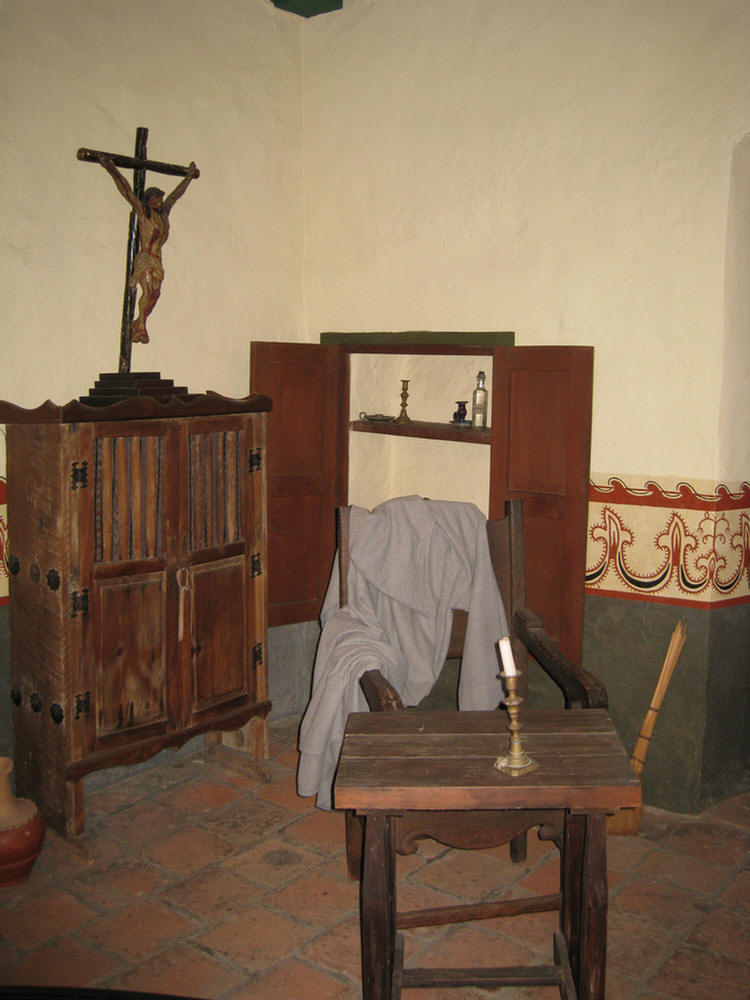
Guest room for travelers of the period
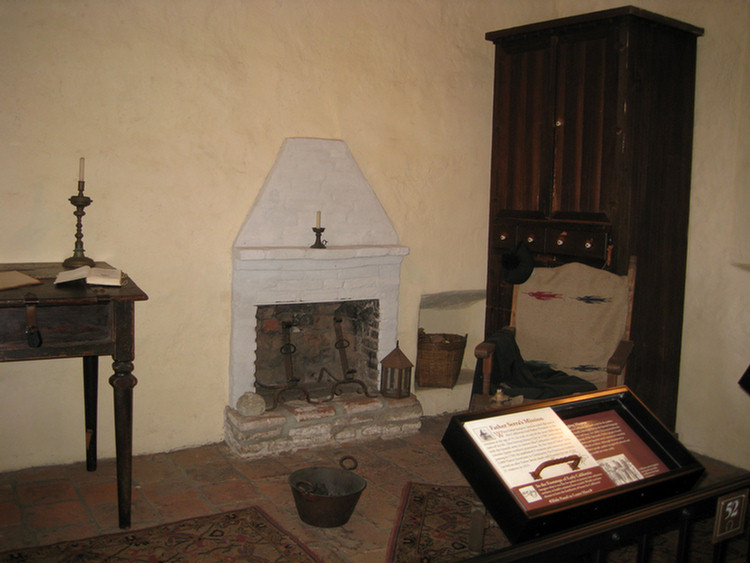
Additional guest rooms
The Mission Was Sold To Private Owners!
Did you know? - José María de Echeandía, the first native Mexican to be elected Governor of Alta California, issued his "Proclamation of Emancipation" (or "Prevenciónes de Emancipacion") on July 25, 1826.[62] All Indians within the military districts of San Diego, Santa Barbara, and Monterey who were found qualified were freed from missionary rule and made eligible to become Mexican citizens; those who wished to remain under mission tutelage were exempted from most forms of corporal punishment

Did you know? - Even before Mexico had gained its independence, the Mission had begun its decline. Although Governor José Figueroa (who took office in 1833) initially attempted to keep the mission system intact, the Mexican Congress passed An Act for the Secularization of the Missions of California on August 17, 1833. The Act also provided for the colonization of both Alta and Baja California, the expenses of this latter move to be borne by the proceeds gained from the sale of the mission property to private interests. Mission San Juan Capistrano was the very first to feel the effects of this legislation the following year when, on August 9, 1834 Governor Figueroa issued his "Decree of Confiscation."
Thereafter, the Franciscans all but abandoned the Mission, taking with them most everything of value, after which the locals plundered many of the Mission buildings for construction materials. "The population of San Juan Capistrano in 1834 had decreased to 861 souls, and in 1840 it was probably less than 500 with less than 100 at the pueblo proper; while in its crops San Juan (Capistrano) showed a larger deterioration than any other (missionary) establishment.
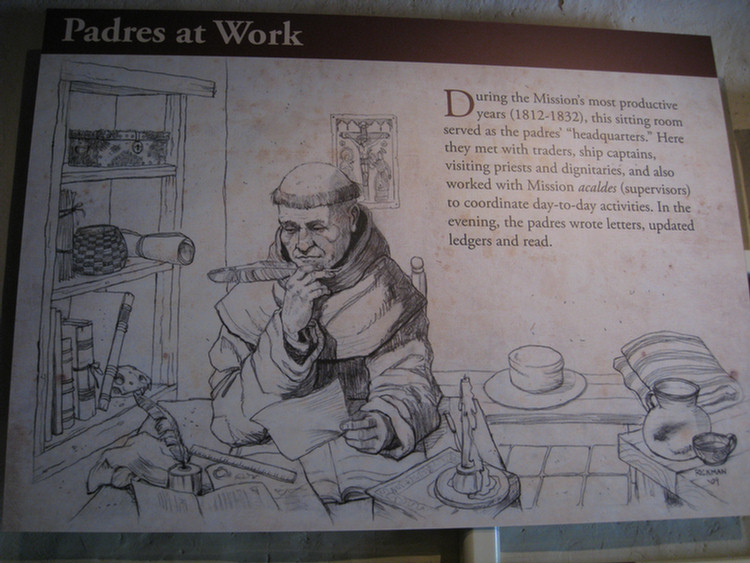
The Northern Building Held Workshops
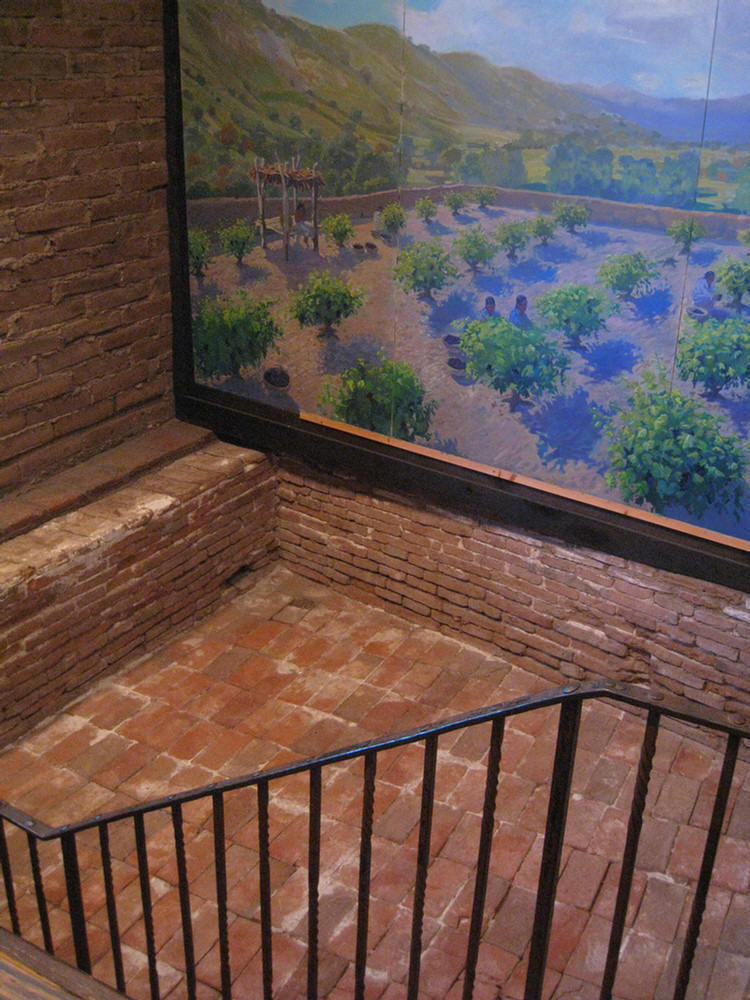
Olive/wine vat was indoors! (T)

The Mission Industrial Center

Larger vats were outside behind the shops on the west buildings
The Shops Made Everything They Needed

Built right on-site!
Did you know? - Adobe is a natural building material made from sand, clay, and water, with some kind of fibrous or organic material (sticks, straw, dung), which is shaped into bricks using frames and dried in the sun. It is similar to cob and mudbrick. Adobe structures are extremely durable and account for some of the oldest extant buildings on the planet. In hot climates, compared to wooden buildings, adobe buildings offer significant advantages due to their greater thermal mass, but they are known to be particularly susceptible to seismic damage in an event such as an earthquake.
Buildings made of sun-dried earth are common in the Middle East, North Africa, South America, southwestern North America, and in Spain (usually in the Mudéjar style). Adobe had been in use by indigenous peoples of the Americas in the Southwestern United States, Mesoamerica, and the Andean region of South America for several thousand years, although often substantial amounts of stone are used in the walls of Pueblo buildings. (Also, the Pueblo people built their adobe structures with handfuls or basketfuls of adobe, until the Spanish introduced them to the making of bricks.) Adobe brickmaking was used in Spain already in the Late Bronze Age and Iron Age, from the eighth century B.C. on. Its wide use can be attributed to its simplicity of design and make, and the cheapness thereby in creating it
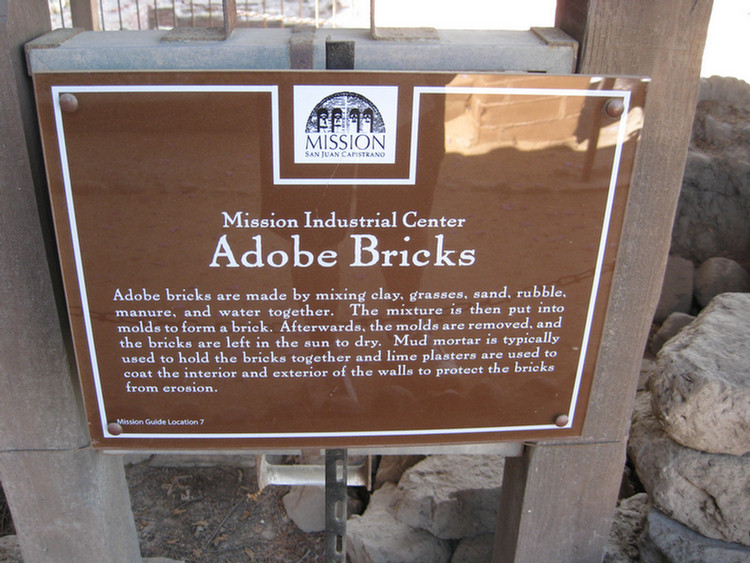
100,000 or so from this very spot!
Did you know? - The word adobe has come to us over some 4000 years with little change in either pronunciation or meaning: the word can be traced from the Middle Egyptian (c. 2000 BC) word dj-b-t "mud [i.e., sun-dried] brick." As Middle Egyptian evolved into Late Egyptian, Demotic, and finally Coptic (c. 600 BC), dj-b-t became tobe "[mud] brick." This evolved into Arabic al-tub (الطّوب al "the" + tub "brick") "[mud] brick," which was assimilated into Old Spanish as adobe, still with the meaning "mud brick." English borrowed the word from Spanish in the early 18th century.

An amazing amount of work when into this structure
Outdoor shops.. Iron Works, Tallow Making,,,
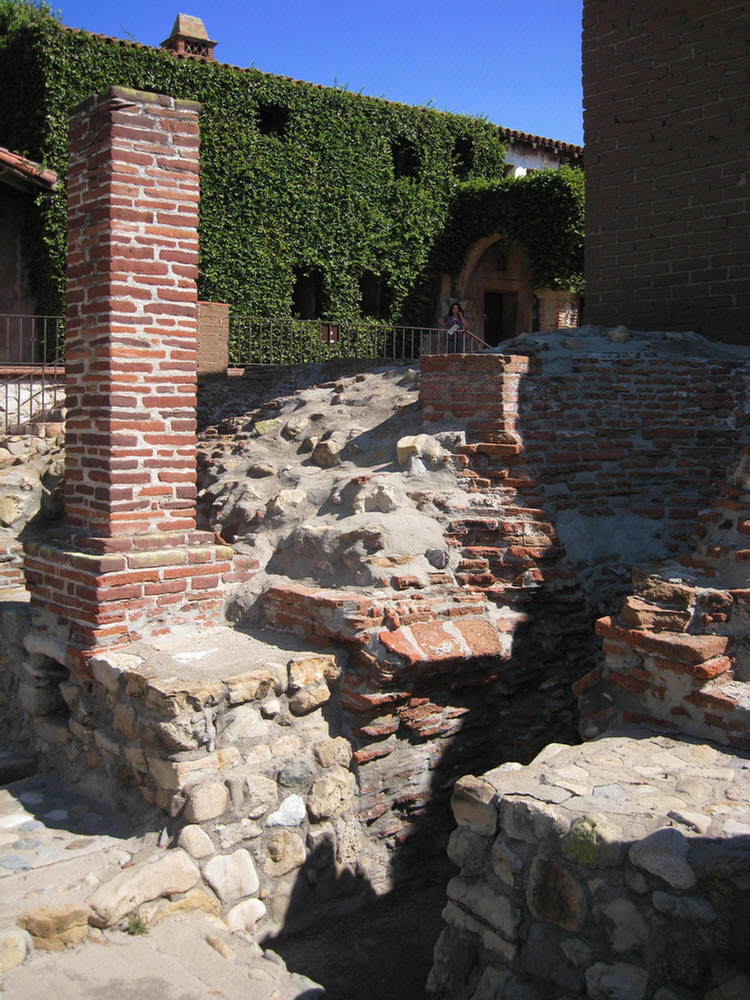
Two iron furnaces

The blacksmith worked miracles
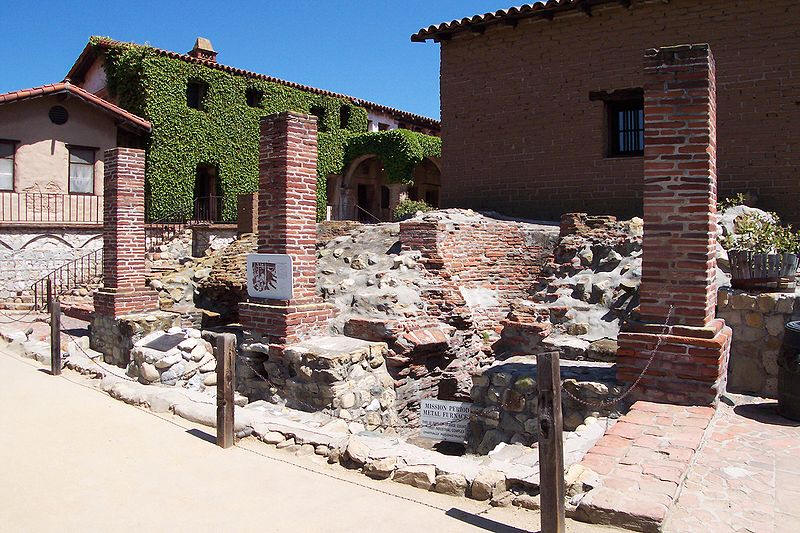
A view of the Catalan forges at Mission San Juan Capistrano, the oldest existing facilities (circa 1790s)
of their kind in the State of California.
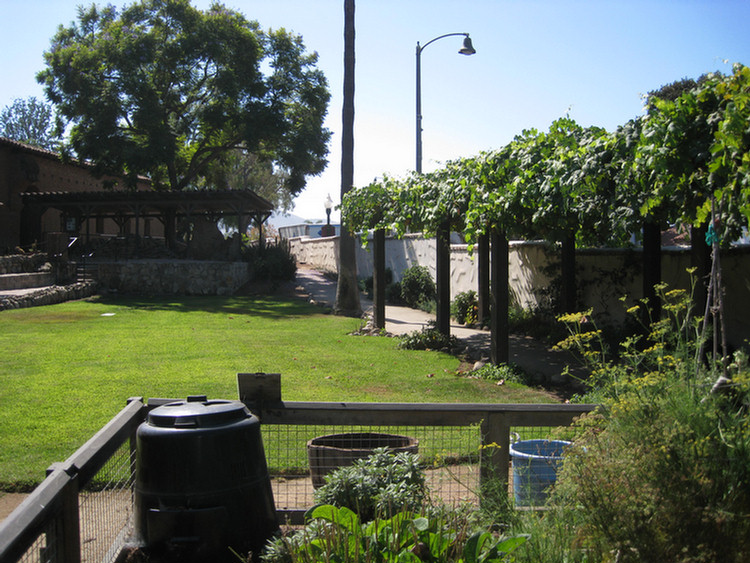
The Padres Garden

They grew European plans in their new location
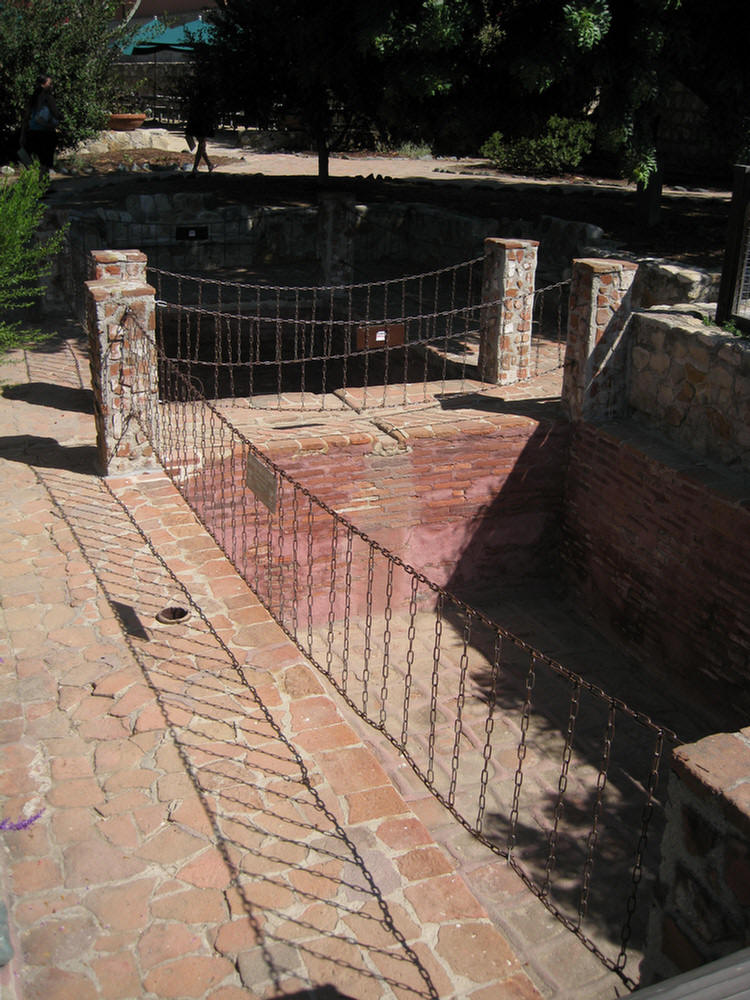
Great tallow vats
Did you know? - Tallow is a rendered form of beef or mutton fat, processed from suet. It is solid at room temperature. Unlike suet, tallow can be stored for extended periods without the need for refrigeration to prevent decomposition, provided it is kept in an airtight container to prevent oxidation. Rendered fat obtained from pigs is known as lard.
Industrially, tallow is not strictly defined as beef or mutton fat. In this context, tallow is animal fat that conforms to certain technical criteria, including its melting point, which is also known as titre. It is common for commercial tallow to contain fat derived from other animals, such as pigs or even from plant sources. Tallow is also the primary ingredient in some leather conditioners.

Did you know? - Tanning is the process of making leather, which does not easily decompose, from the skins of animals, which do. Often this uses tannin, an acidic chemical compound. Coloring may occur during tanning.
Tanning leather involves a process which permanently alters the protein structure of skin so that it cannot ever return to rawhide. Making rawhide does not require the use of tannin and is made simply by removing the flesh and fat and then the hair by way of soaking in an aqueous solution (often called liming when using lime and water or bucking when using wood ash (lye) and water), then scraping over a beam with a somewhat dull knife, and then leaving to dry, usually stretched on a frame so that it dries flat. The two aforementioned solutions for removing the hair also act to clean the fiber network of the skin and therefore allow penetration and action of the tanning agent.
The English word for tanning is from medieval Latin tannāre, deriv. of tannum (oak bark), related to Old High German tanna meaning oak or fir (related to modern Tannenbaum). This refers to use of the bark of oaks (the original source of tannin) in some kinds of hide preservation.

The taning facilities were quite large
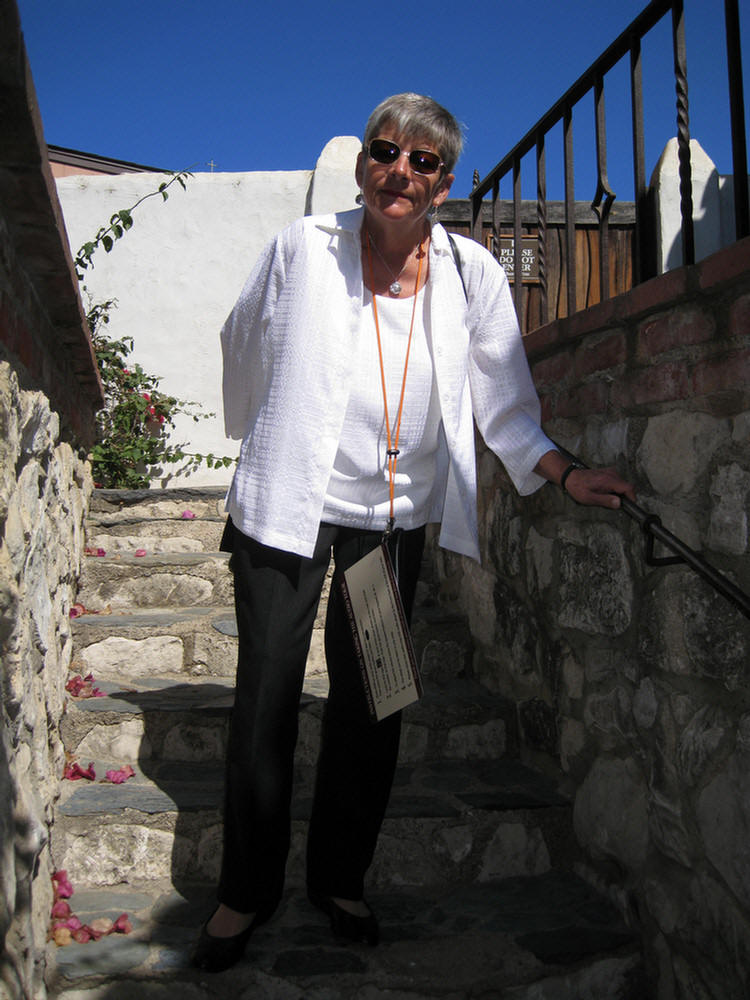
Up to the patio and civilization
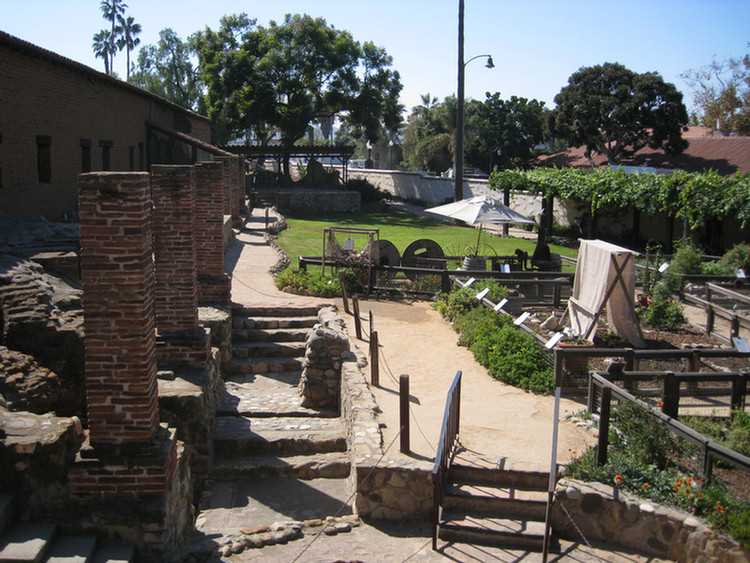
Looking back over the working areas

Today's docent

This area was discovered in the 1930's when trying to repair a drainpipe!

The shops... Soap factory, Forge Shop, Wood/Weaving Shop, Winery
Amazing And Back Breaking Construction
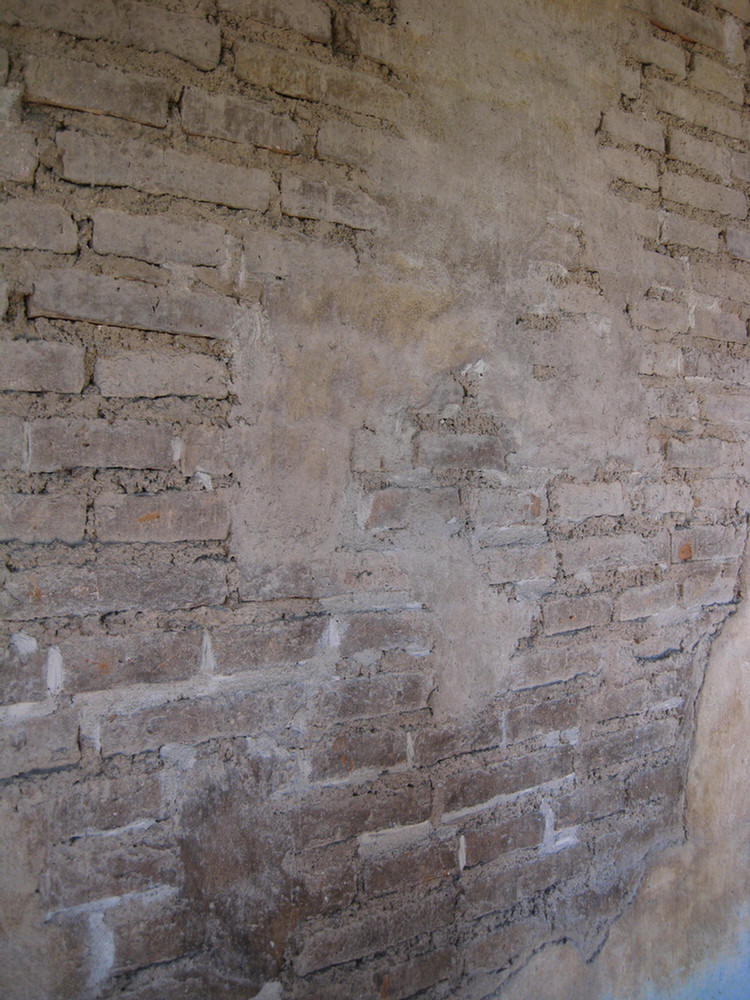
Every brick was hand made
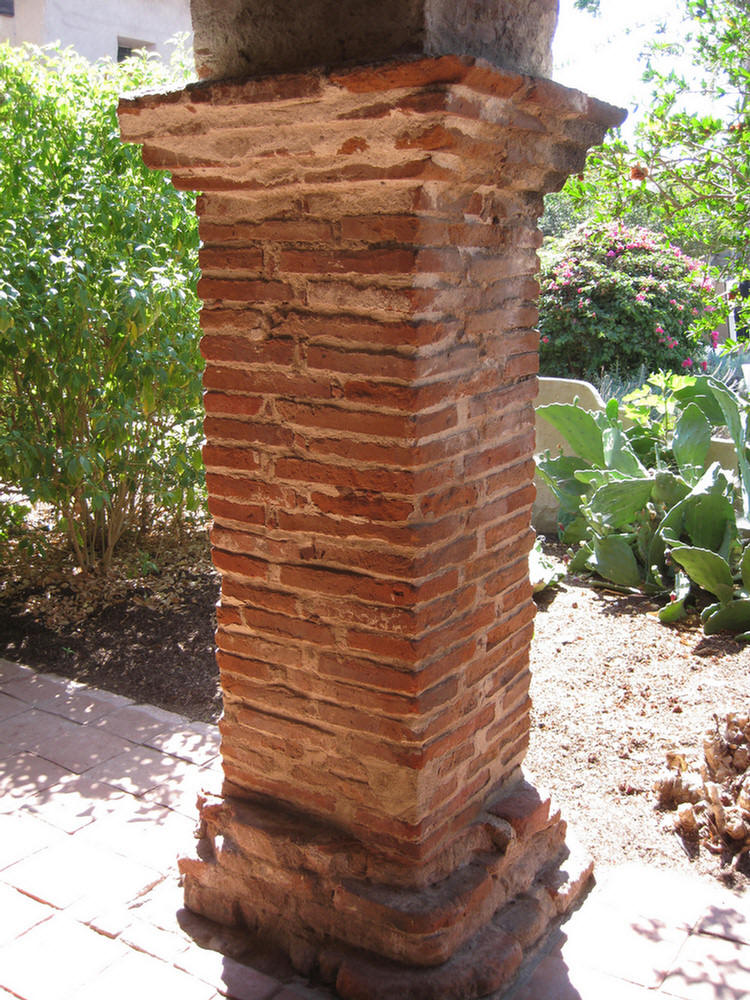
And been here for 250+ years

Bight plants provided a vivid contract to the adobe

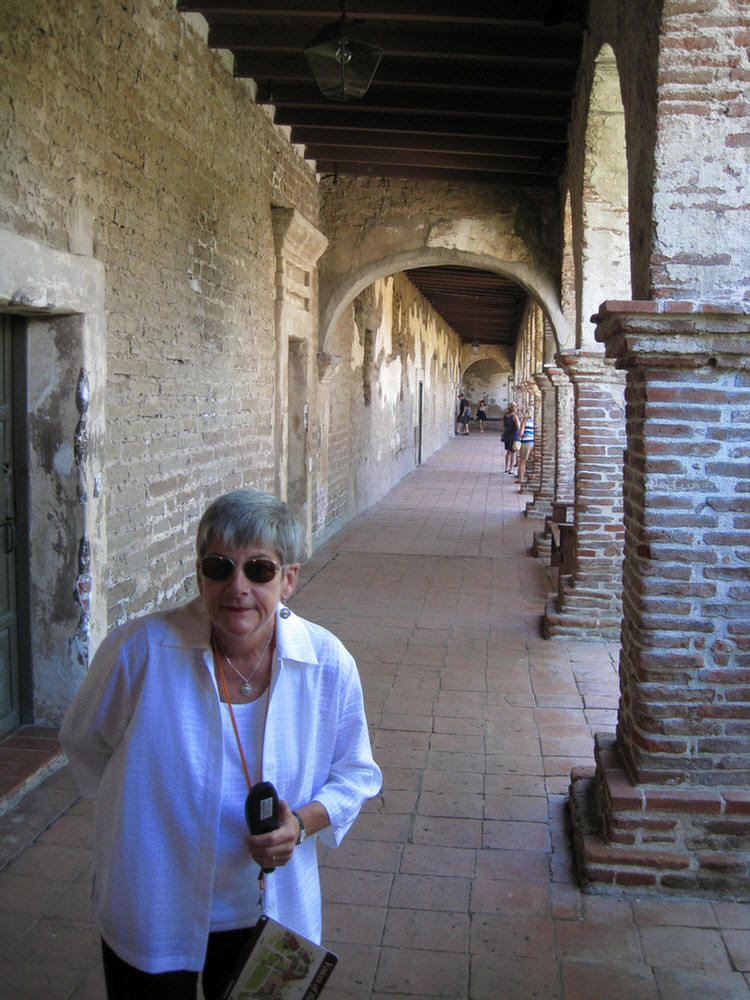
Wine room, Sanctuary, Serra's Church are along the Easy wall

The plaster protected the soft adobe bricks

The patio is hugh

The fountain is a good place to sit and relax

We are ready to go! This Moorish-style fountain inside Mission San Juan Capistrano's central courtyard, was built in the 1920s through the efforts of Father St. John O'Sullivan
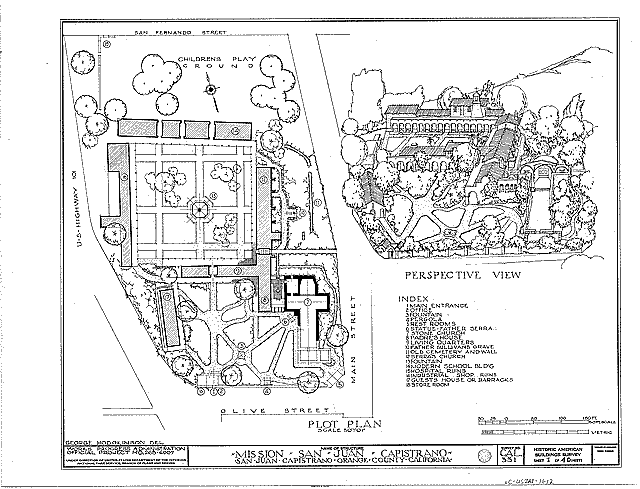
We are in the center of the patio

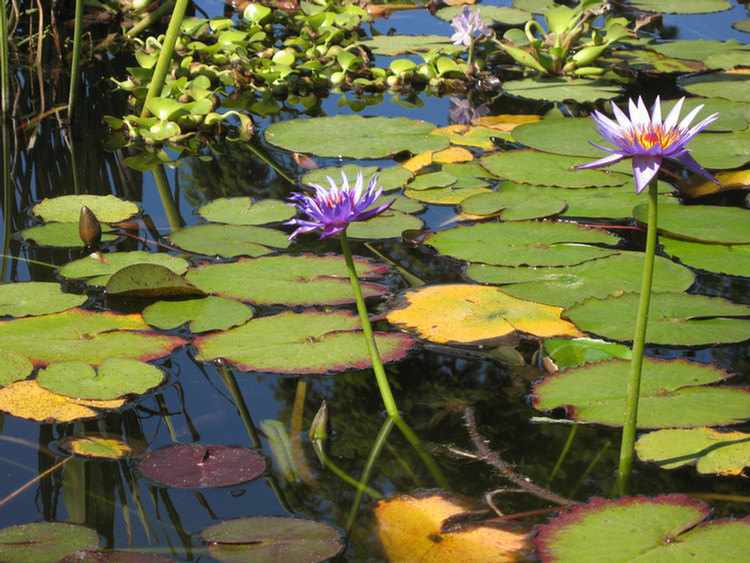

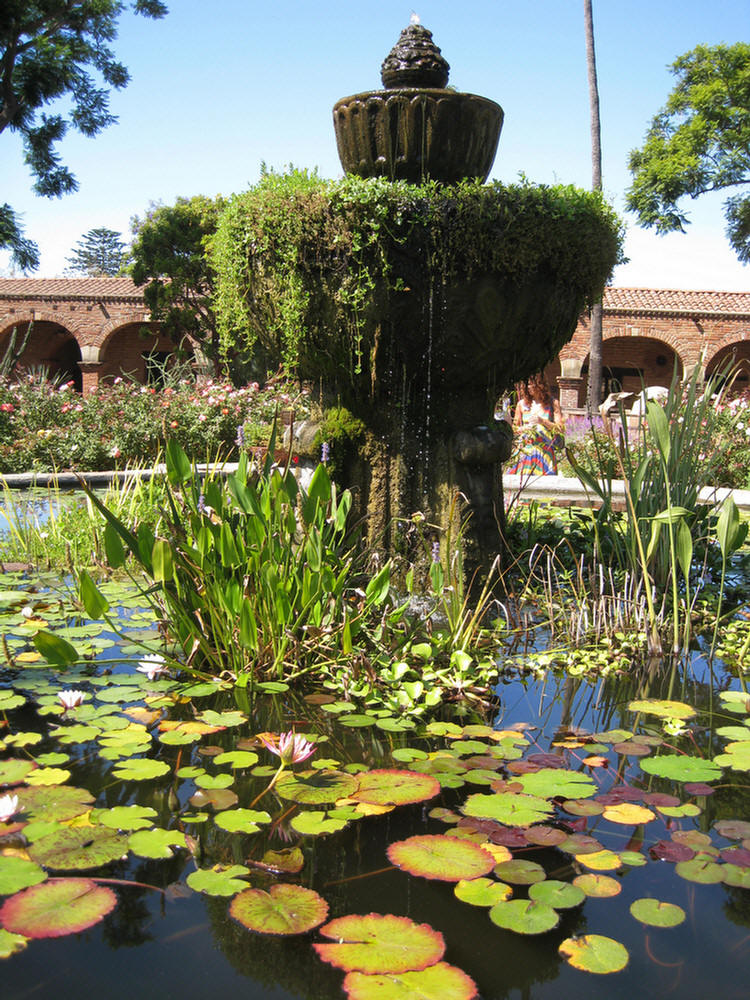
More Buildings Await Us
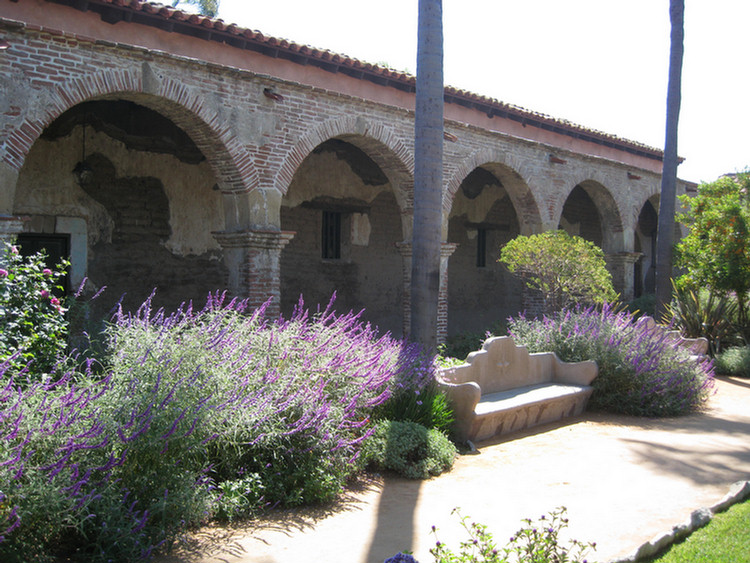
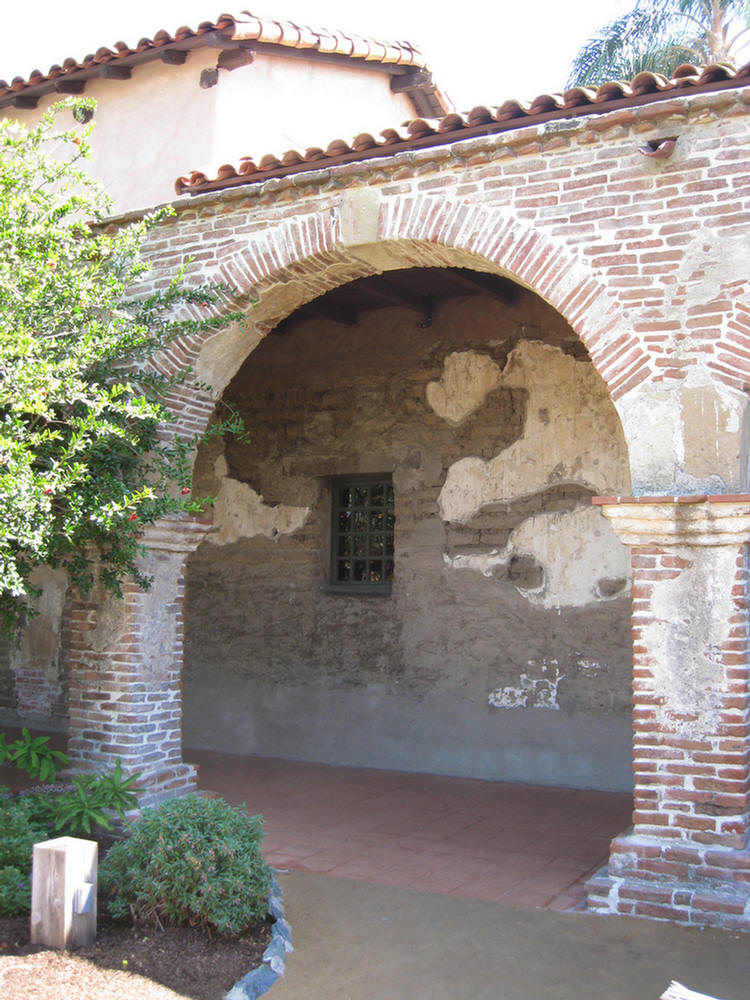
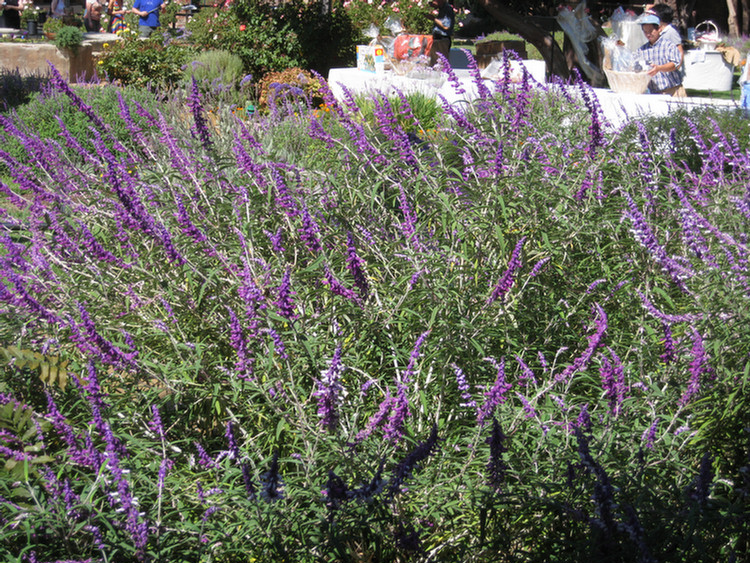
Ficus Pulmaria everywhere

The termites have been busy!
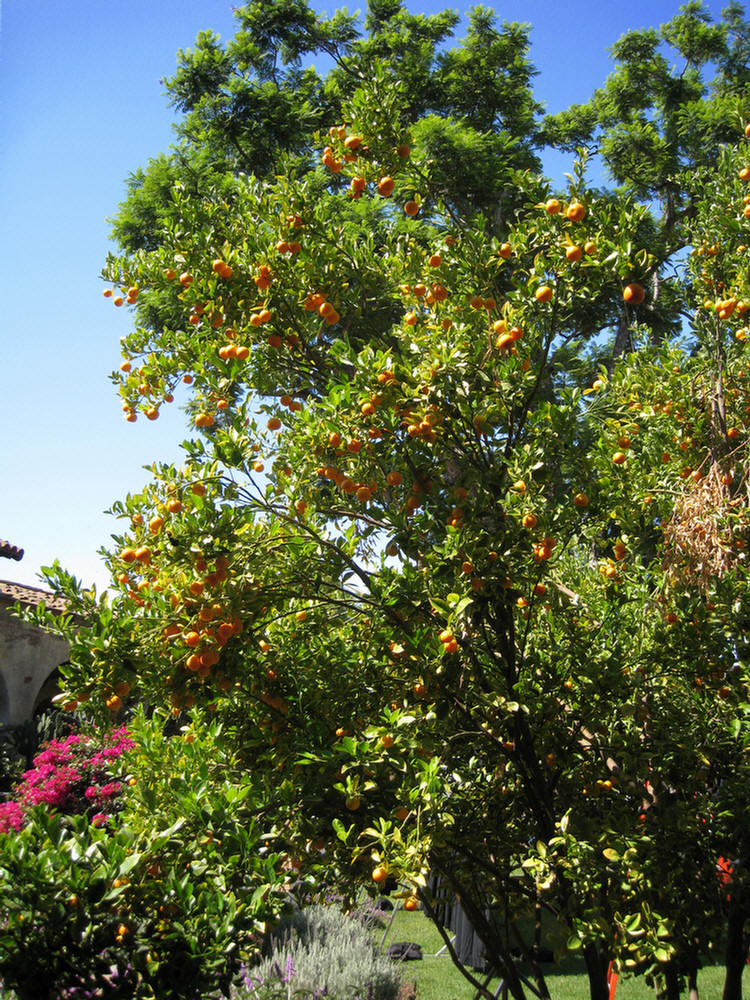
We needed an orange tree to assure we were in California

Photograph circa 1880
Father Serra's Church

Did you know? - After Father Mut's departure in 1886 the parish found itself without a permanent pastor, and the Mission languished during this period. Father St. John O'Sullivan arrived in San Juan Capistrano in 1910 to recuperate from a recent stroke, and to seek relief from chronic tuberculosis.
He became fascinated by the scope of the Mission and soon set to work on rebuilding it a section at a time. Father O'Sullivan's first task was to repair the roof of the Serra Chapel (which was being employed as a granary and storeroom) using sycamore logs to match those that were used in the original work; in the process, the roof of the apse was raised to allow for the inclusion of a window so that natural light could be brought into the space. Other refurbishments were made as time and funds permitted.
Arthur B. Benton, a Los Angeles architect, strengthened the chapel walls through the addition of heavy masonry buttresses. The centerpiece of the chapel is its spectacular retablo which serves as the backdrop for the altar. A masterpiece of Baroque art, the altarpiece was hand-carved of 396 individual pieces of cherry wood and overlaid in gold leaf in Barcelona and is estimated to be 400 years old.
It was originally imported from Barcelona in 1806 for the Los Angeles cathedral but was never used. It was later donated by Archbishop John Joseph Cantwell of Los Angeles and installed sometime between 1922 and 1924 (the north end of the building had to be enlarged to accommodate this piece due to its height).

It was dark inside so the camera was set to 1/2 second
